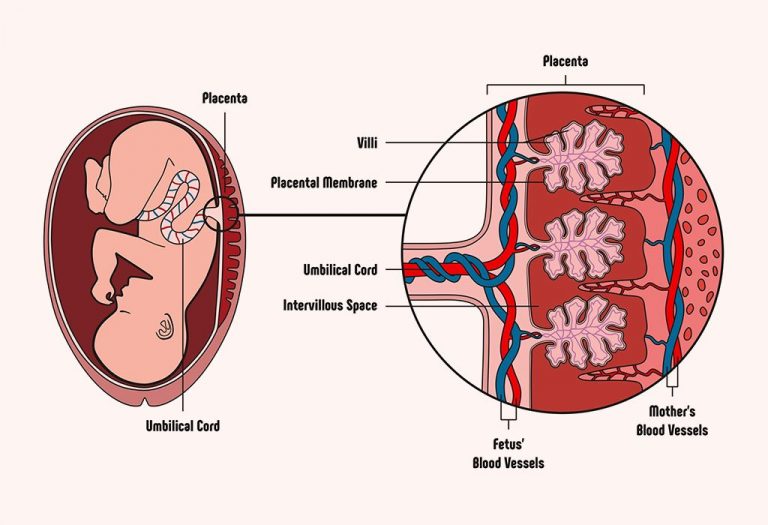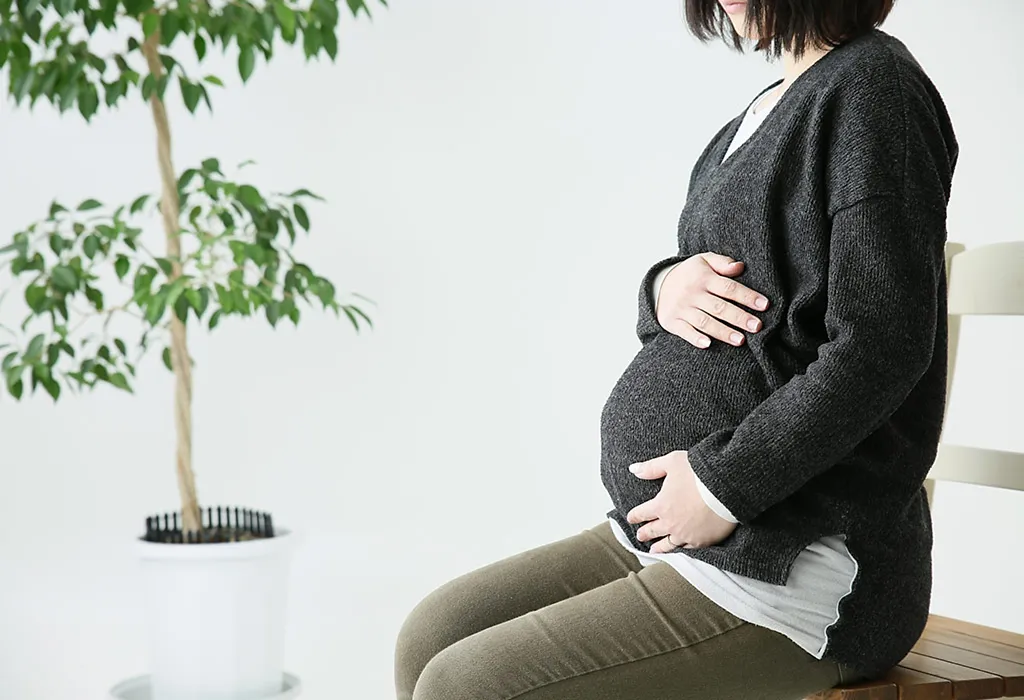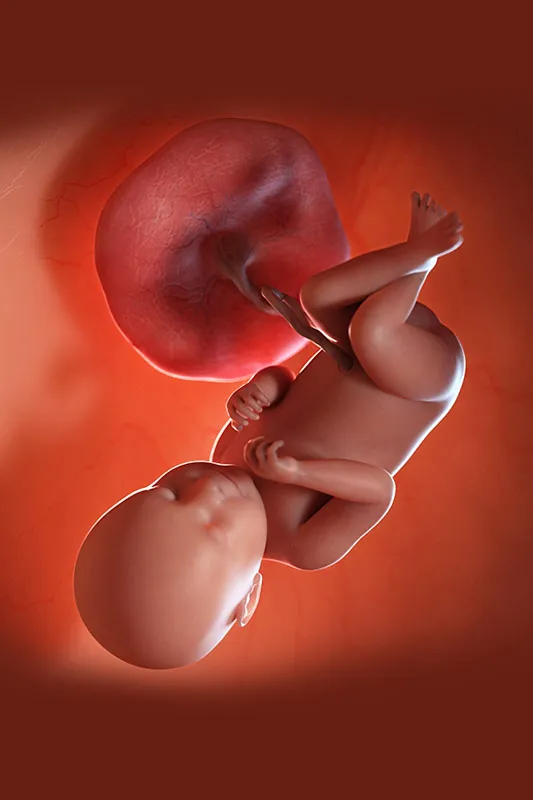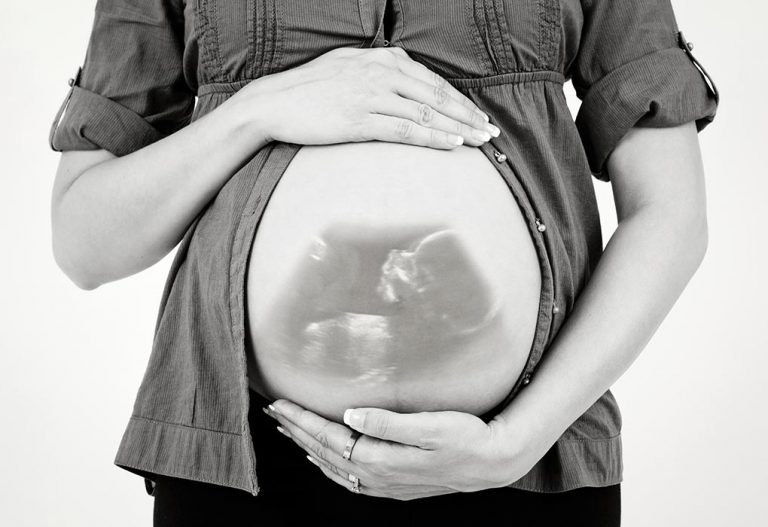Anterior Placenta in Pregnancy – Symptoms, Complications and Precautions

The placenta starts forming in the very first weeks of pregnancy and is a vital organ that sustains the developing baby. Shaped like a flat, pancake-like structure, it attaches itself to the uterine wall and provides essential oxygen and nutrients to the baby through the umbilical cord, while also removing waste products from the baby’s bloodstream. The position of the placenta can vary and may attach to the front, back, or sides of the uterus, depending on where the fertilized egg implants. In an anterior placenta pregnancy, the placenta attaches along the front of the uterus, which can sometimes cushion the baby’s movements and make them less noticeable early on. However, this placement is generally not considered harmful and usually shifts as the pregnancy progresses.
What Is Anterior Placenta?
The fertilised egg, which will grow to become your baby, travels along the fallopian tube and embeds itself along the uterine wall. The placenta forms wherever this egg is embedded, which can be at the top, sides or in the front and back wall of the uterus. When the egg embeds itself along the front wall of the uterus, it forms an anterior placenta. You will know if you have an anterior placenta pregnancy during the ultrasound scan performed around the 20th week of the pregnancy. An anterior placenta baby is just as safe as any other baby, as its development is not impacted in any way. An anterior placenta pregnancy does the job of nourishing your foetus.
Is Having an Anterior Placenta Considered a Problem?
All positions along the uterine wall are normal sites for the development of the placenta. Placental health and the development of the baby do not depend on its placement. Therefore, it is not a problem to have an anterior placenta.
- In cases where foetal movements are not felt, even at the 23rd week, going for a foetal health assessment can be reassuring for mothers.
- Despite its location close to the surface of your abdomen, an anterior placenta does not pose any additional dangers to the health of the foetus. This is because there are many layers – the thick uterine wall, abdominal muscles, and fat that insulate it from the exterior world.
- Birth complications caused by an anterior placenta are few. It is only when the placenta is placed low on the uterine wall that birth complications may occur.
- The placenta travels over the course of pregnancy and it is possible that a low-lying placenta will move into the upper part of the uterus and cause no complications by the time of delivery.
However, if the anterior placenta is lying very low in the uterus at the time of delivery, it might partly or completely block off the cervix. This would make a caesarean section necessary. This condition, called placenta previa, is a rare condition.
How Common Is Anterior Placenta While Pregnant?
An anterior placenta is relatively common during pregnancy. It occurs in about 20-30% of pregnancies, meaning that around one in four to five women will experience this type of placental positioning.
What Are the Causes of Anterior Placenta?
An anterior placenta can develop due to various factors, often influenced by random implantation or specific conditions. Here are some common causes of anterior placenta during pregnancy.
1. Random Placental Placement
The positioning of the placenta is usually a random occurrence. The fertilized egg can implant anywhere in the uterus, which determines where the placenta will form. In many cases, it simply attaches to the front of the uterus, leading to an anterior placenta.
2. Shape of the Uterus
Variations in the shape or structure of the uterus, such as having a tilted or bicornuate (heart-shaped) uterus, can influence where the placenta attaches. These structural differences can make anterior placement more likely.
3. Previous Uterine Surgeries
Women who have had surgeries on their uterus, such as a C-section or fibroid removal, may experience scar tissue, which can affect where the placenta implants. In some cases, this can lead to an anterior placenta.
4. Multiples Pregnancy
In pregnancies with twins or multiples, there’s a higher likelihood of one placenta attaching to the front of the uterus due to the limited space available for implantation.
5. In Vitro Fertilization (IVF)
Women who conceive via IVF may have a slightly higher chance of developing an anterior placenta, though the reasons for this are not entirely understood.
What Are the Symptoms of an Anterior Placenta?
An anterior placenta usually does not present with any specific symptoms, as it is a natural variation in placental placement. However, certain signs may hint at its presence, often due to how it affects fetal movement and heartbeat detection. Below are some common symptoms or clues that could indicate an anterior placenta.
- Delayed Detection of Fetal Movements: One of the most noticeable signs of an anterior placenta is the delayed sensation of fetal movements. Women may feel the baby’s kicks and movements later than usual, often closer to 23 weeks or beyond, as the placenta cushions the baby’s movements.
- Difficulty Detecting the Fetal Heartbeat with a Doppler: Doctors may find it slightly more challenging to detect the baby’s heartbeat early on using a handheld Doppler device. The anterior placenta acts as a barrier between the device and the baby, making it harder to pick up the sound of the heartbeat.
- Muffled or Softer Fetal Movements: Even once fetal movements are felt, they may seem softer or less pronounced because the placenta is located at the front of the uterus, dampening the sensations.
- Frequent Ultrasounds: If movement is not detected by the 23rd week or there’s difficulty in finding the heartbeat, doctors may recommend an ultrasound to assess the placenta’s position and check the baby’s health.
Diagnosis of Anterior Placenta in Pregnancy
Diagnosing an anterior placenta typically involves a combination of methods to confirm its presence and assess its impact. Here’s how it is commonly identified:
1. Ultrasound Examination
The most definitive way to diagnose an anterior placenta is through a routine ultrasound. This imaging technique allows doctors to visualize the placenta’s position within the uterus, clearly showing whether it is located at the front.
2. Doppler Device Examination
A handheld Doppler device may be used to detect the fetal heartbeat. If the heartbeat is difficult to detect or delayed, it may prompt further investigation to rule out an anterior placenta or other factors.
3. Maternal Symptoms and History
If a mother reports that she feels fetal movements later than expected or experiences muffled sensations, this may lead to a suspicion of an anterior placenta. Doctors will often follow up with an ultrasound to confirm the diagnosis.
4. Follow-Up Scans
In some cases, additional ultrasound scans may be performed later in the pregnancy to monitor the placenta’s position and ensure that it is not causing any complications, such as placenta previa or restricted fetal growth.
Complications in Pregnancy Due to an Anterior Placenta
When it comes to the risks of an anterior placenta, we need to understand that an anterior placenta does not in general present any complications during gestation. However, it might seem vulnerable and prone to complications because of its position. This is the exception, rather than the rule. The placenta, being a vascular and blood-rich organ, means that any tearing, rupture, cutting or needling poses the risk of excess bleeding. Some of the anterior birth complications are:
- An anterior placenta can pose complications during delivery if a caesarean section is required. The anterior placement could make incision placement more complicated or may result in more bleeding during the delivery.
- Complications are faced during needle positioning during amniocentesis. This includes risks of seeding, bleeding, and tears in the membrane.
- An anterior low-lying placenta has a chance of complications like placenta previa. This may partly or completely block off the cervix, necessitating a caesarean delivery.
- Placenta accreta is a complication faced when the anterior placenta grows over the site of the old caesarean section scar and the placenta grows into, and through, the wall of your uterus.
Ultrasound and MRI scans can be used to diagnose all these conditions well ahead of delivery to make sure that plans for a safe caesarean birth can be made.
Difference Between an Anterior and Posterior Placenta
Understanding the differences between an anterior and posterior placenta is important for assessing how placental placement might affect pregnancy. Each position has distinct characteristics that can influence symptoms, fetal monitoring, and delivery. Here’s a comparison of the two types:
- Location
- Anterior Placenta: Attached to the front wall of the uterus, facing the abdominal wall.
- Posterior Placenta: Attached to the back wall of the uterus, facing the spine.
- Fetal Movement Sensation
- Anterior Placenta: May result in delayed or less pronounced feelings of fetal movements as the placenta cushions and dampens the sensations.
- Posterior Placenta: Typically allows for earlier and more distinct fetal movement sensations since the placenta is positioned away from the abdominal wall.
- Detection of Fetal Heartbeat
- Anterior Placenta: Can make it slightly more challenging to detect the fetal heartbeat with a Doppler device due to the placental barrier.
- Posterior Placenta: Generally allows for easier detection of the fetal heartbeat as the placenta is not in between the Doppler and the baby.
- Ultrasound Imaging
- Anterior Placenta: Clearly visible during ultrasound, but may sometimes be associated with a need for additional scans if complications arise.
- Posterior Placenta: Also easily visible during ultrasound, often considered a more neutral position with fewer complications compared to an anterior placenta.
- Impact on Delivery
- Anterior Placenta: Rarely affects the delivery process, but may sometimes cause discomfort or less fetal movement awareness.
- Posterior Placenta: Generally does not impact the delivery process and is often associated with fewer concerns related to placental placement.
Placental Grading
The placenta goes through a process of calcification and maturing over the term of pregnancy. It develops calcium deposits and some parts begin to die, only to be replaced with fibrous tissue. This calcification is the basis of grading of the placenta, with:
-
Grade 0
This is from inception in early pregnancy.
-
Grade I
This is at around 31 to 32 weeks of pregnancy.
-
Grade II
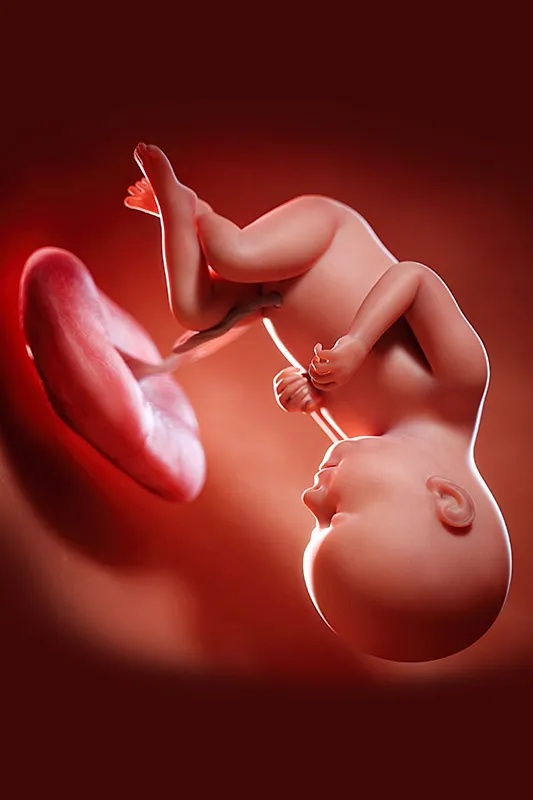
-
Grade III
This is at around 38 weeks of pregnancy; not before 37 weeks.
At grade III, the placenta is severely calcified. This calcification is considered a normal part of pregnancy, and not a source of concern.
- Care needs to be taken in cases of premature calcification with pre-existing conditions like placenta previa, diabetes, high blood pressure or severe anaemia. This is because research indicates that if placental calcification occurs before the 32nd week of pregnancy, the baby may have a low birth weight.
- Complications due to placental calcification are not common, and in most cases, calcification does not affect the development of the foetus.
Factors That Cause Placental Complications
An anterior placenta is not in itself a cause of complication. Complications occur only when it combines with additional conditions like an anterior low-lying placenta, placenta previa or a placental abruption. In all these cases, complications occur if a C – section is indicated or if the placenta gets detached from the wall of the womb.
Precautions to Take While Having an Anterior Placenta
Many pregnancy self-help sites and books teach techniques to make things easier during delivery for expectant mothers, which can be summarised as points for placental and mental health. Some of the anterior low-lying placenta precautions include:
- Eating Well: A well-nourished placenta is a healthy one.
- Staying Hydrated: Your placenta needs fluids to process all the growing foetus’ waste products.
- Creating an Exercise Plan: Find an exercise with inversions and a stretching plan ideal for you through your pregnancy, and try to stick to it.
- Not Worrying: The worst-case scenario is not the most likely to occur. Before you assume the worst, write down your symptoms that indicate this scenario and find out if the symptoms match your fears.
- Making Good Lifestyle Choices: Do not abuse your body with stress, overwork, alcohol, drugs and over or under eating.
When to Contact Your Doctor
Once the doctor confirms that you have an anterior placenta, it is important to stay vigilant and watch out for vital signs and symptoms that could indicate a complication. Make sure to contact your doctor if you experience any of the following symptoms:
1. Vaginal Bleeding
If you notice any spotting or extensive bleeding, get in touch with your doctor to schedule a check up.
2. Abdominal Pain
Any abdominal pain out of the blue or even due to trauma to the stomach area, such as an accident or fall, is a cause for concern and should be checked out as soon as possible.
3. Uterine Contractions
Not to be confused with labour, if you experience abnormal uterine contractions that are fast or away from your due date, contact your doctor for a check-up to diagnose or rule out any complications.
4. Severe Lower Back Pain
You are likely to experience back pain during pregnancy, but if the pain is too severe to handle, contact your doctor immediately.
What Questions Should You Ask Your Doctor?
When discussing placental placement with your doctor, it’s important to ask questions that clarify how this may impact your pregnancy and delivery. Here are some key questions to ask:
- What is the position of my placenta, and how might it affect my pregnancy?
- Will the position of my placenta require additional monitoring or ultrasounds?
- Could my placental placement impact my delivery method or birth plan?
- What should I do if I notice any changes in fetal movement or experience unusual symptoms?
FAQs
1. Is C-Section the only birth option?
If one has an anterior placenta, caesarean is not the only option while giving birth. If the vaginal opening is not covered, those having an anterior placenta have a good chance of giving birth normally.
2. Can an anterior placenta cause more intense labor pains?
An anterior placenta itself does not usually cause more intense labor pains. However, the position of the placenta might affect how sensations are felt. The overall experience of labor pain is influenced by various factors, including the baby’s position and your individual pain threshold.
3. Will an anterior placenta affect breastfeeding after delivery?
An anterior placenta does not typically impact breastfeeding. However, if the placenta’s position caused any unusual pregnancy complications, it’s worth discussing with your healthcare provider to address any potential concerns that could affect breastfeeding.
4. Can an anterior placenta lead to complications in a subsequent pregnancy?
An anterior placenta in a previous pregnancy does not usually affect future pregnancies. Placental positioning is often different in subsequent pregnancies, so it’s important to have each pregnancy monitored individually to ensure optimal care and management.
Above all stay happy. A happy frame of mind, along with timely medical intervention and expert consultations, makes for happy and healthy babies. Keep yourself prepared, and have a safe pregnancy!
References/Resources:
1. Anterior Placenta; Cleveland Clinic; https://my.clevelandclinic.org/health/diseases/23306-anterior-placenta#symptoms-and-causes
2. Gude. N, Roberts. C, Kalionis. B, King. R; Growth and function of the normal human placenta (Thrombosis Research); National Library of Medicine; https://pubmed.ncbi.nlm.nih.gov/15507270/
3. Torricelli. M, Vannuccini. S, Moncini. I, Cannoni . A, et al.; Anterior placental location influences onset and progress of labor and postpartum outcome (Placenta); National Library of Medicine; https://pubmed.ncbi.nlm.nih.gov/25573094/; April 2015
4. Findik. F, Icen. M; Clinical Comparison of Anterior or Posterior Placental Location with Placenta Previa and History of Previous Cesarean Section Delivery (Medical Science Monitor); National Library of Medicine; https://www.ncbi.nlm.nih.gov/pmc/articles/PMC10072007/; March 2023
5. What complications can affect the placenta?; NHS; https://www.nhs.uk/pregnancy/labour-and-birth/what-happens/placenta-complications/
6. Zia. S; Placental location and pregnancy outcome (Journal of the Turkish-German Gynecological Association); National Library of Medicine; https://www.ncbi.nlm.nih.gov/pmc/articles/PMC3935544/; December 2013
7. Human Placenta Project: How Does the Placenta Form?; NIH; https://www.nichd.nih.gov/research/supported/human-placenta-project/how-does-placenta-form
Also Read:
Placenta Accreta
Placental Insufficiency
Circumvallate Placenta
Calcification of Placenta in Pregnancy
Was This Article Helpful?
Parenting is a huge responsibility, for you as a caregiver, but also for us as a parenting content platform. We understand that and take our responsibility of creating credible content seriously. FirstCry Parenting articles are written and published only after extensive research using factually sound references to deliver quality content that is accurate, validated by experts, and completely reliable. To understand how we go about creating content that is credible, read our editorial policy here.






